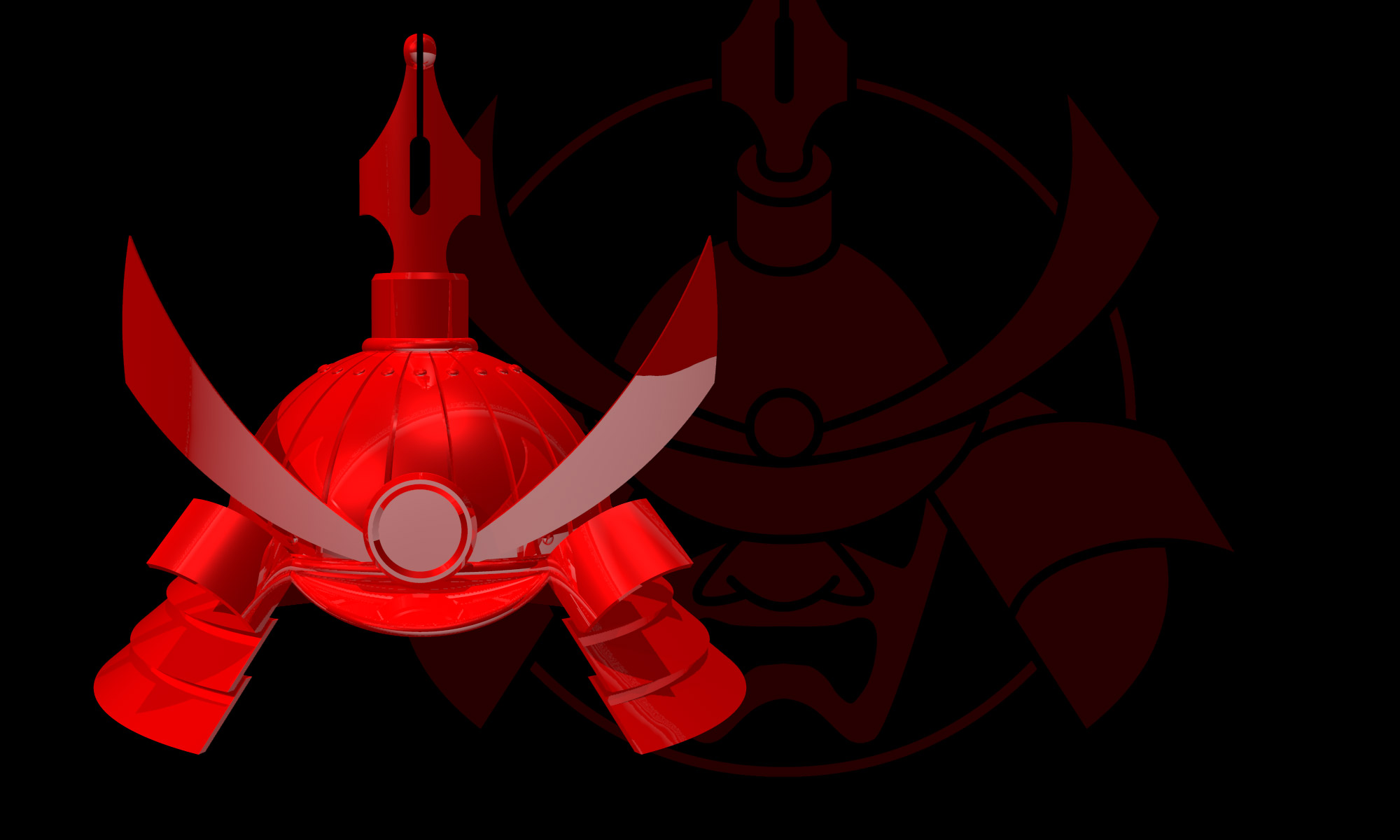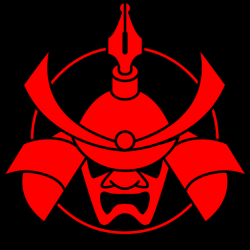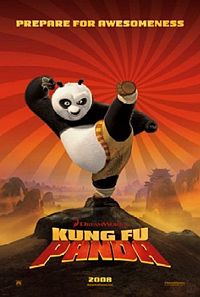An extraordinary rendition of Smoke on the Water, Japanese style.
Via Japundit.


But a sword dipped in ink, now, that's a good compromise
Phil Goldman was denied the job of male stripper in Tokyo because he was too hairy. But he posed for me, fully clothed, in Bangkok, when I drew the T'ai Chi Long Syllable Form. It's based on the White Crane Yang style long form, which Phil knows well because he studied properly with an accomplished master in Boston. I concealed his identity in the illustration by not drawing any hair. Or facial features. Or face. But if you know Phil, you can still probably recognise him.
He's just started writing a blog online.* He's a fine teller of tales, and he made me laugh a lot when we hung out in the City of Angels, so if you like to read about other people's more interesting lives, catch up on http://tunafishicecream.blogspot.com/ — it's early days so you can jump in now and still be at the begining of the journey.
* As Phil is a man of the world, and (at the start of the story) in Bangkok to boot, some might consider the subject matter N entirely SFW. Just to let you know.
From the Onion again:
Wii Video Games Blamed For Rise In Effeminate Violence
From an aikido point of view, of course, this is a good thing, because feeble attacks are so much easier to defend against! If someone were to combine aikido with Wii technology, then we could produce a whole generation of super-effeminate attackers, which would not only make the streets of the world safer but also ensure aikido's popularity well into the next decade. C'mon Aikido3D guys, surely you could hack something together?
I'm working on a new Fudebakudo frame at the moment. I used (and continue to use) the same set of pens, given to me by a special friend, for all the Fudebakudo cartoons. These are Rotring Rapidograph, and I use four different widths, working on marker pad over a light-box. I usually sketch in pencil or fibre-tip pens first, sometimes sketching the same thing again and again and again before inking-in. Of course other stuff in Fudebakudo is entirely digital (for example, the ninja — although the background was done in felt-tip pen first), and there's even a tiny bit of POV-Ray inside the book (the electron microscope scans of the blades on p.52, if you care). So Fudebakudo really is an MMMA (mixed media martial art).
What prompted today's entry was recently reading a Pixelsurgeon interview with the accomplished American illustrator Bob Staake in which he says:
I love to draw, but I also enjoy pushing around a cursor here and there. Nothing pisses me off more than old-school artists who somehow feel that creating art on a computer is somehow easy, or worse, isn't legitimate. Anyone can drip a paintbrush into some india ink and slosh it across a piece of drawing paper. It takes a special talent to do the same thing with a mouse and a machine that can crash in a moment's notice.
Incidentally, if you're interested in how some people work (and I know most people don't think they would ever be), there's a great little video on YouTube showing his surprising technique (music by the artist, I believe).
You're looking for a oonnection with the martial arts here? Well, there doesn't have to be one, since this post is about production, which is what is concerning me right now. But there is something explicit from my on-the-mat training that crossed over directly to my drawing technique (not to mention the whole business of repetitive practice, and observation, and, well, a whole load of connections actually). And that is breathing.
An old aikido friend, years ago, drew my attention to this and subsequently I noticed I held my breath when drawing long lines (like borders, which often sneak into my cartooning style). In general, especially in the internal or soft martial arts (although some people are surprised to discover it matters when you learn to use a sword properly, too), how you breath is important. Obviously I don't mean exhaling with a shriek or power-grunt when you slam your fist into somebody, but the more subtle stuff in all the movements around that. You're rarely told this to begin with, but later you start to notice that some of the people who are really good have worked it out, and sometimes they even tell you about it when you ask them.*
So when you look at a long line in a Fudebakudo cartoon (yes, the long lines are the ones that tend to wobble a bit) you can be confident that I was breathing out (not in; not holding my breath) when I drew it. A little bit weird, no?
* Not always, though. I was once present when an eccentric Japanese sensei got very angry when someone asked him about how they should be breathing. So pick your moment carefully.
We like to think that martial arts typically develop out of military or oppressive environments (that is, they arose to facilitate the work of soldiers, or the rugged people who were opposing them). This is a deadly serious and full-time occupation. Neither soldiers nor the oppressed peoples in this scenario would likely be described as hobbyists.
But in the modern word, to the vast majority of people who practice them, the martial arts emphatically are a hobby. Ellis Amdur has written eloquently on this topic, and has reasonably yet provocatively asserted that if you're not comfortable calling what you do a hobby, then you have an attitude problem. I know lots of people (and see a great deal more) who practice the martial arts who would be uncomfortable with this. Personally I suspect that it's less of a problem amongst the readers of Fudebakudo, because by embracing the Way of the Exploding Pen, you are pretty much acknowledging the silliness of a lot of what passes for fact and acceptable behaviour in the martial world. But perhaps I'm wrong and there are Fudebakudo practitioners who genuinely believe their martial art is a Way of Life. I can think of a handful of individuals for whom such a claim might actually be true (inevitably, though, none of them would be so pretentious as to state it in the first place).
Although I am not a nun and never have been one (bear with me on this), I have an opinion about "Way of Life" because I did work with nuns for a few years, and the contrast was stark. Being a nun is a Way of Life. Going to kickboxing or aikido or t'ai chi classes three evenings a week — or, yes, even if you do it for three months at the Shaolin temple — is a hobby. Even most professional martial arts teachers (and already you have to wonder, in most cases, what went wrong with their proper jobs) are teaching a hobby. Stamp collecting is arguably a way of life for the philatelists at Christies auction house, and it has a genuine and functional history; but still it's a hobby, even if there are a handful of professionals who are supported by it, and thousands of pounds change hands every month in its name.
Here's the nub of the matter: being a nutter is a way of life. I think that's what a lot of people are confused about when they say that their chosen martial art is a way of life.
None of this in any way diminishes the value that the practice of a martial art may bring. Certainly my own practice has had a massive influence of how I have developed as an adult, where I have lived, the people I have met and the way I relate to them. But that's simply how influential hobbies can be. (As an aside, I think it could be fairly easily argued that throughout the Edo period in Japan the martial arts were often pretty much an institionalised hobby amongst the samurai classes, although with ritual and caste clouding the comparison a little).
Anyway . . . the relative unimportance of a hobby compared to a way of life is at its most stark when politics arise. Someone or some organisation decides to explicitly influence the way you behave. If it's benign, this means you practice in a structured and organised micro-society of hobbyists. If it's not, then this is where the trouble starts.
That's why the mantra of "it's only a hobby" is one that can serve as an important reality checkpoint. Sooner or later (later, if you're lucky) you find yourself having to deal with someone who is exercising maverick power over you, an influence beyond that to which you thought you had subscribed. Most people who have practiced seriously in the martial arts, even within the native countries of those arts, have run up against behaviour which in a place of work — or a public situation — would be seen as unacceptably tyrannical. But in the martial arts there is a dangerous potential combination of machismo and superiority and it's sadly common. Sometimes it's laughable, sometimes it's appalling.
I mention all this — not, as you might expect, because I have just witnessed a mind-numbing example of political shenanigans in the martial arts (I haven't; well, not recently, but we all have stories, of course, and — like buses — you only have to wait a while and another one is bound to turn up) — but because of a wonderful quote that I came across in the "Twisto book" Judith sent me this month. Some explanation: Judith has the unqiue honour of being the hidari-peiji proofreader of the Fudebakudo book (a bizarre experience I should document here one day). You're thinking, wow, it doesn't get much more distinguished than that; but no — for many years before that she was the editor of the Enigma, the newsletter of the National Puzzlers' League (the American NPL). Judith, or perhaps in this context I should say Sibyl, has recently put together a small book about Twisto. Twisto is the nom, that is, the pseudonym, of an exceptional member, now departed, of the NPL.
In this book, there is a throwaway exchange concerning "it's just a hobby." Yes, in the world of brain-aching cryptograms and crossword clues, just like in the parallel world of spinning kicks and wrist-locks, the ugly politics of organisation creep in, and members sometimes need reminding that their life-blood activity is in fact only a hobby. How silly the squabbling hobbyists always look from outside! (And I'm looking at you too, religious people). Anyway, after all that, here it is, attributed to Smaug (who is, by no coincidence, a senior grade in the art of Fudebakudo):
"What's in the jar?"
"Some bees."
"You collect bees?"
"That's right."
"Oh. I see there aren't any air-holes in the lid."
"That's right."
"But then the bees will suffocate and die."
"Well, it's only a hobby."
I'm a bit busy at the moment, so here's another link. It's a bit late too, sorry. Still:
Karate Lessons Give Child Self Confidence to Quit Karate
"'If it wasn't for the focus and determination I learned in karate, I would still be in karate right now,' he added."
Heh. Cracked.com's list of five movie martial artists that lost a Deathmatch to Dignity. Funny (contains some strong language, of course).
The Mikka Bouzu webcomic — documenting one man's futile search for enlightenment — has smashed through the one-year barrier like an iron fist through a polystyrene ceiling tile. A round of double-Zen applause (two hands clapping) to Ed O'Grady, the cartoonist behind it.

Po the panda
Angeline Jolie and Lucy Liu — together at last! This year Dreamworks will release Kung Fu Panda, a children's animation featuring the five animal stylists, and the eponymous panda. The staggering thing of course is that they seem to have passed by the possibility of using the floral styles. Not one of the studios has approached Fudebakudo for film options on that. Yet. Maybe it will be the sequel.
Last year I wrote about samurai crabs. This year starts with news of a crabfight in Hakodate — Shoplifting 'seafood samurai' attacks security guard with crab. Crabfighting aficionados will be appalled to learn that, according to that report, Japanese citizens these days use imported crabs for their crabfights.
Link via Japundit.